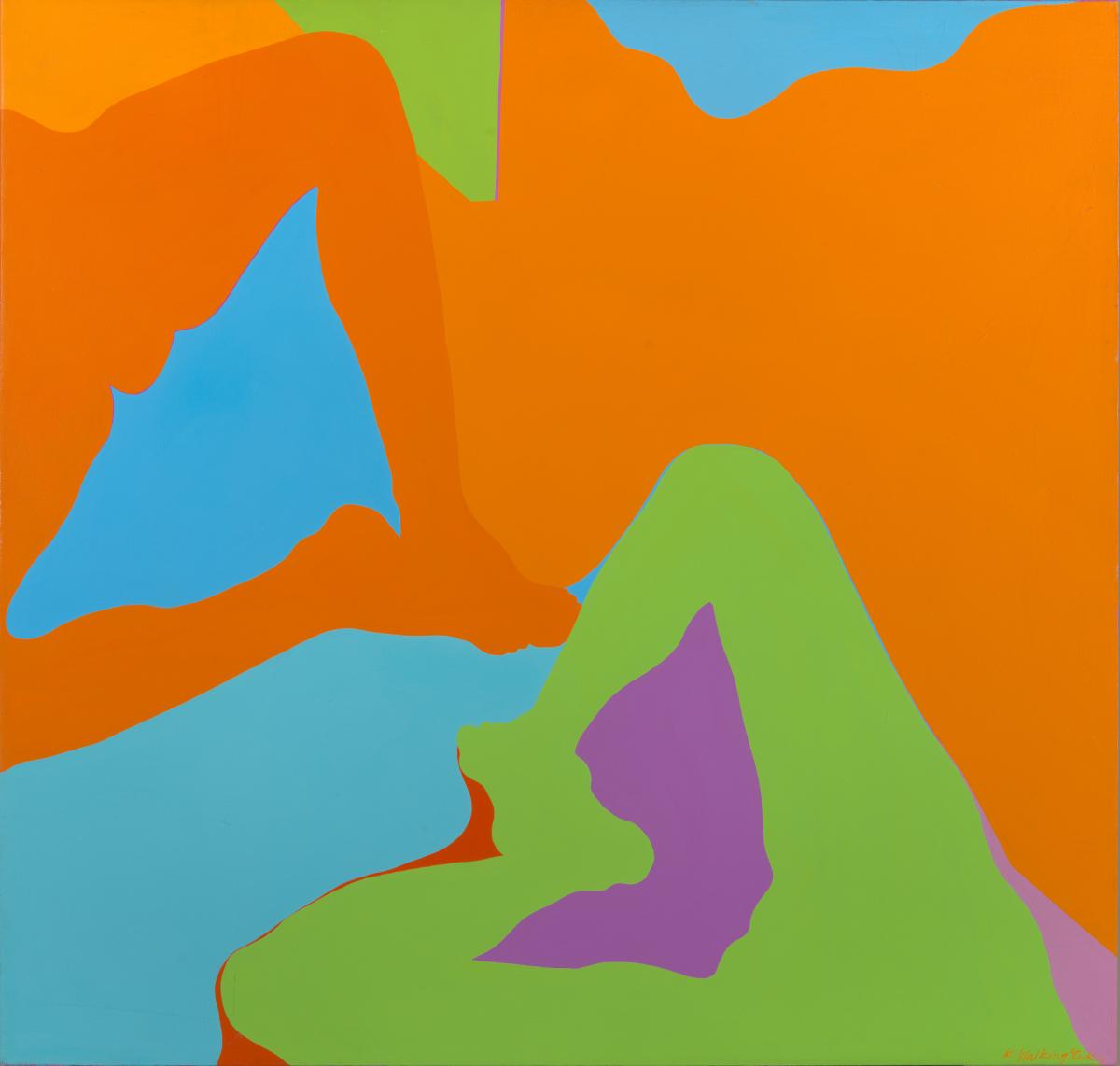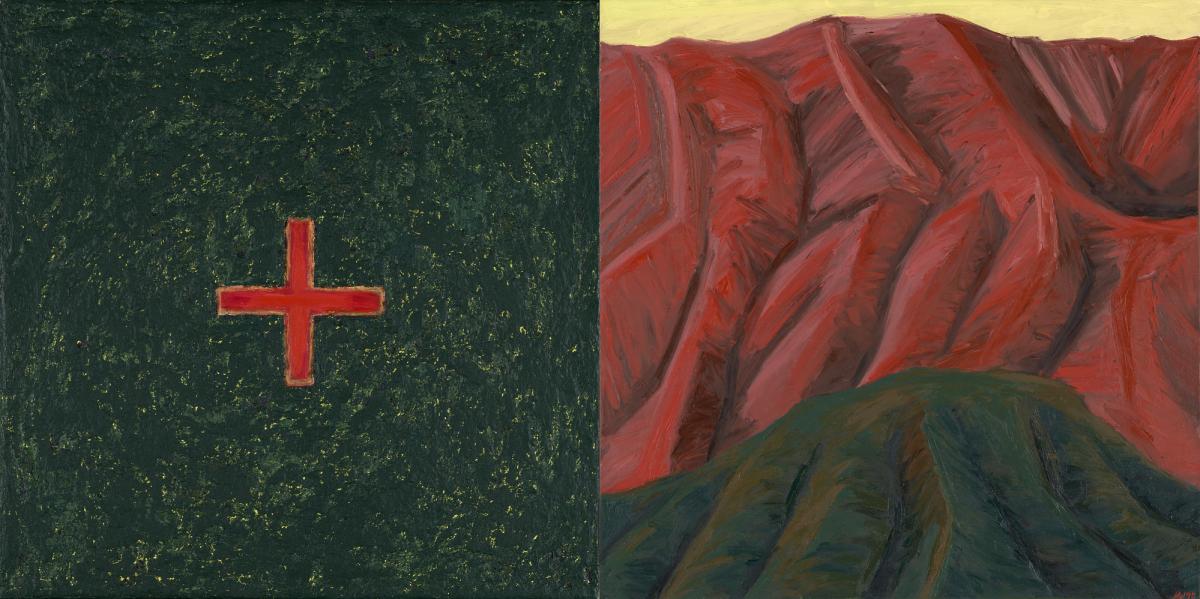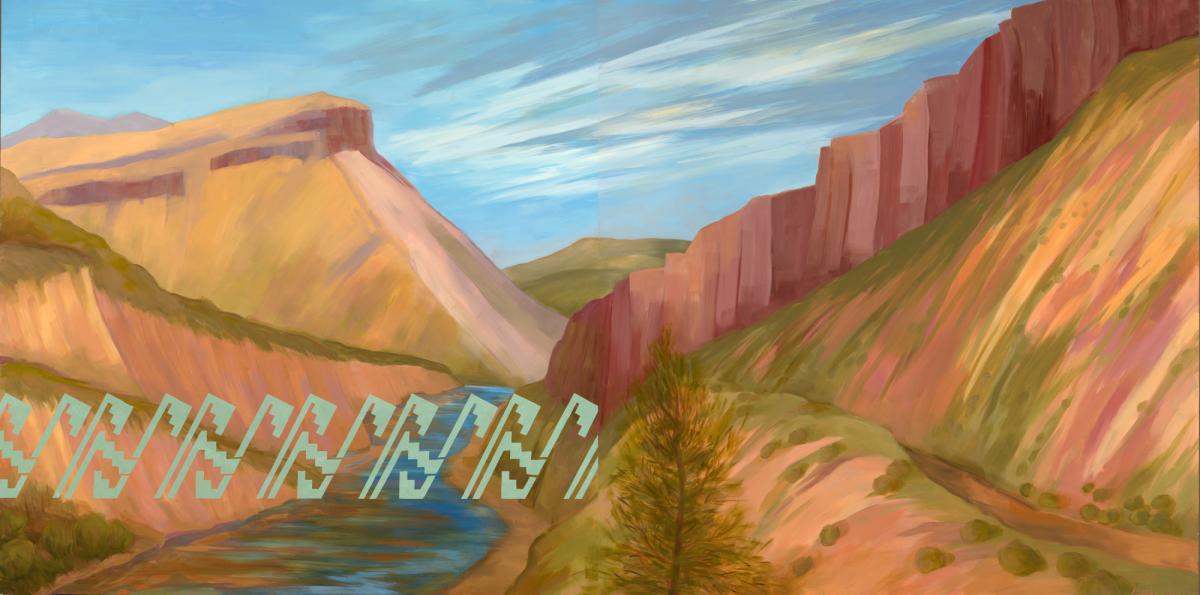
Renowned artist Kay WalkingStick took to painting early. At six-years old, while driving with her family through the rolling hills of upstate New York, she looked out the window at the beautiful landscape and said, “Oh, I wish I had my brushes.”
Born in Syracuse, New York, in 1935, to a Scotch-Irish mother and a Cherokee father, WalkingStick is one of the most important and path-breaking Native American artists of her generation. SAAM recently acquired three of her paintings, each marking a different period in the artist’s long and distinguished career.
Kinetic and vibrant, Two Women II, from 1973, is a colorful acrylic on canvas depicting two female figures and the shapes between and around them. While figurative at its heart, it contains aspects of abstraction and Pop influences.
Fast forward twenty plus years, With Love to Marsden is a diptych, a painting made of two panels are joined together. The title is a reference to the early American modernist painter, Marsden Hartley, a favorite of WalkingStick, also known for his landscapes. It’s interesting to note, as Melissa Ho, curator of twentieth-century art at SAAM describes, “WalkingStick painted both panels just moving and shaping the paint with her bare hands, not using a brush.”
The third painting added to SAAM’s collection, Orilla Verde at the Rio Grande, was completed in 2012, and marks another important phase in WalkingStick’s career. Here, as with other works created since the early 2000s, WalkingStick’s painting is based on a particular location—in this case, in New Mexico—that WalkingStick visited to spend time sketching and taking photographs. She later returned to her studio to create the painting. Orilla Verde is notable for the Native pattern the artist added to the landscape. In this case, the pattern is based on Ancestral Pueblo pots that are part of the collection at the Smithsonian's National Museum of the American Indian.
When she was a child, her mother instilled a sense of cultural pride in her and said, “Stand up straight, Kay, you’re a Cherokee.” I think of that phrase when I look at the arc of WalkingStick’s work and Orilla Verde in particular, where she literally marks the land as Native land.
Learn more from Melissa Ho about Kay WalkingStick and the three paintings recently acquired by SAAM in the video below. The video is part of the Smithsonian American Art Museum's ongoing series American Art Moments. Join a SAAM expert and go beyond the artwork label to discover the untold stories and rich connections represented in some of the museum's most iconic artworks.




















